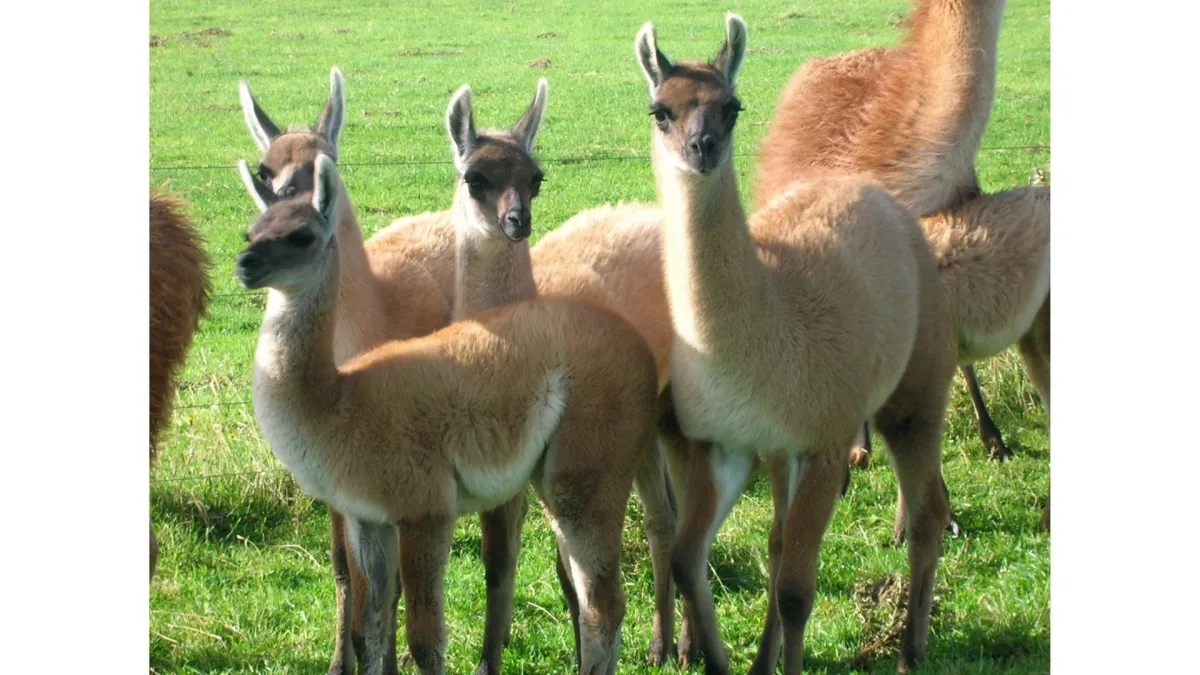
Guanacos
Guanacos (Lama guanicoe) belong to the South American camelid family, alongside llamas and alpacas. Unlike their domesticated cousins, guanacos are still considered wild animals in their native range, which includes Patagonia and parts of Chile, Peru, and Bolivia. While rare in New Zealand, a small number of farmers do keep them, typically for fibre production or conservation interest.
What Do Guanacos Look Like?
Guanacos are elegant animals with soft tan coats, pale underbellies, and expressive dark eyes. They have long necks, upright ears, and a naturally athletic build suited to rugged terrain. Their fleece consists of a double coat with a coarse outer layer and a very fine, soft undercoat. The inner fibre is considered high quality and can be used for handspinning.
Keeping Guanacos on Lifestyle Blocks
It is possible to keep guanacos on a lifestyle block, but they are not suitable for everyone. These are sensitive, quick-moving animals that can be difficult to handle without the right experience. If you are confident with horses or cattle, you may find guanacos a rewarding challenge. Otherwise, they are best left to more experienced keepers.
Female guanacos and young animals can generally be kept behind standard-height wire fencing, provided they are not under pressure. Males, however, may attempt to jump fences, especially if females are nearby or if they are being harassed by a more dominant male. Good paddock design and strong boundary fencing are essential.
Handling and Facilities
Guanacos do not flow easily through traditional sheep or goat handling systems. They require sturdy yards, flexible pen arrangements, and calm, patient handling. Some farmers adapt cattle yards or build custom facilities to suit their needs. When it comes time to shear, the process is similar to handling llamas. Most are laid down and restrained with ropes and a blindfold, which helps minimise stress.
They do not need to be shorn every year. Fibre can be harvested as needed, depending on the animal and the requirements of the owner.
Guanacos prefer browsing over grazing, so a varied pasture with access to shrubs or hillier paddocks will suit them best.
Suitability and Temperament
These animals are more alert and reactive than alpacas or llamas. They tend to keep their distance and may not tolerate frequent handling. For this reason, guanacos are not well suited to pet homes or inexperienced owners. However, they can be a good fit for lifestyle farmers with a genuine interest in camelids and the patience to work with their unique behaviour.
A Natural Guard Animal
Like llamas and some alpacas, guanacos can act as effective guards for livestock. They are highly alert and view unfamiliar dogs as potential threats. If they sense danger, they produce a loud, distinctive alarm call and may strike with their front legs to defend their herd. This makes them a useful deterrent against wandering dogs in rural areas.
Final Thoughts
Guanacos are striking and intelligent animals, but they are not a low-effort option. They require secure fencing, confident handling, and thoughtful care. For those with the right experience and facilities, they offer beautiful fibre, engaging behaviour, and even a degree of protection for other stock.
To learn more about rare and heritage livestock, visit the Rare Breeds Conservation Society of New Zealand.

